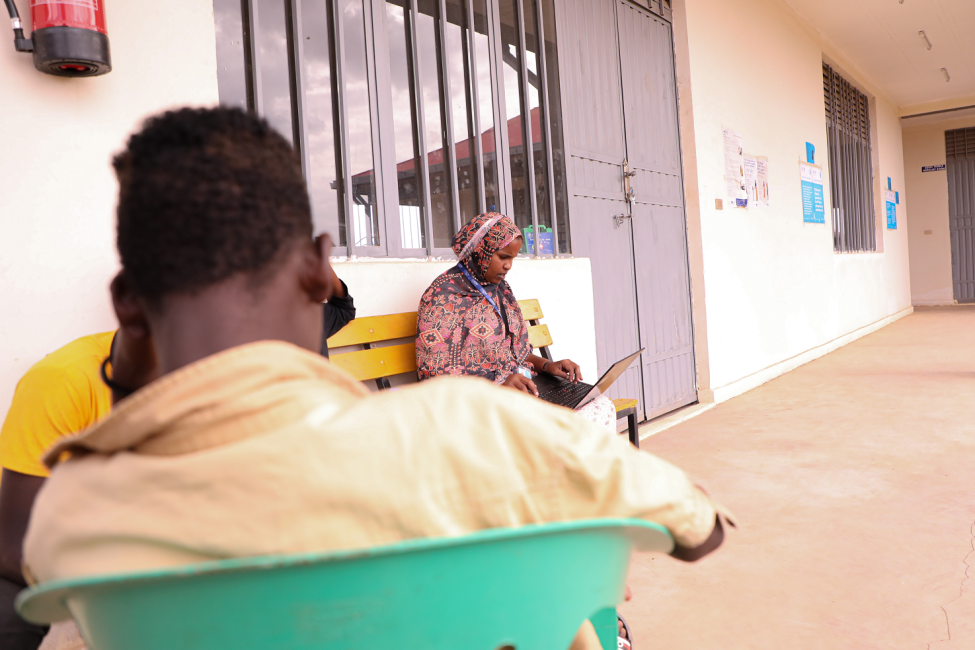-
Who we are
WHO WE AREIOM is the leading inter-governmental organization promoting humane and orderly migration for the benefit of all, with presence in over 100 countries. IOM has been active in the East and Horn of Africa from the early 1980s.
About
About
IOM Global
IOM Global
-
Our Work
Our WorkAs the leading inter-governmental organization promoting since 1951 humane and orderly migration, IOM plays a key role to support the achievement of the 2030 Agenda through different areas of intervention that connect both humanitarian assistance and sustainable development. Across the East and Horn of Africa region, IOM plays an important role of protecting, assisting and supporting migrants.
Cross-cutting (Global)
Cross-cutting (Global)
- Where we work
- Take Action
- Data and Resources
- 2030 Agenda
Tog Wajalle, Ethiopia – Mur*, Fer*, and Mew* are eleven and twelve-year old students. Leaving the town of Fedis in the East Hararghe Zone of the Oromia National Regional State in Ethiopia, they had a dream of 'working to own a smartphone'.
Influenced by a group of men, the boys made a dangerous decision to leave home, embarking on a journey to pursue work in Hargeisa, Somalia. One of the men approached and asked them if they want to own an expensive smartphone like his. Without much hesitation, they set off from Fedis to Tog Wajalle, the border town in Ethiopia to Somalia, by car and to Hargeisa on foot.
“We believed all his promises and we didn’t think of the consequences. We were just excited,” shared the young boys.
Unaccompanied Migrant Children (UMC) face extreme vulnerability to exploitation, abuse, and violence during their journey. The International Organization for Migration’s (IOM) Migration Response Centres (MRCs), located in border towns, are dedicated to addressing the protection needs of migrants, with a special focus on UMCs such as Mur, Fer, and Mew.
For two months, the young boys worked as shoe shiners in Hargeisa. Their hope of purchasing a costly smartphone was shattered when they were apprehended by authorities and detained for entering and residing irregularly in Somalia. Shortly after being arrested, they were returned to the border town between Somalia and Ethiopia, without any form of support or assistance.
In the absence of adequate protection services, child migrants face the risk of having their basic rights violated, such as being detained or held against their will by different parties, being forced to work, living on the streets and lacking access to essential services. Furthermore, migrant children are vulnerable to violent crime, including sexual and gender-based violence.
A Study on Child Migrants from Ethiopia provides an insight into the characteristics of child migration from Ethiopia analysing their socioeconomic profile, driving forces for irregular child migration, the migratory routes, and decision-making processes of children on the move.
Since its establishment in 2019, Tog Wajalle MRC has provided assistance to over 5,180 migrants. Of these 1,115 were returning UMC (303 girls and 812 boys). In addition, since 2020, IOM has assisted over 2,540 returning UMCs through its various programmes.
Mur, Fer, and Mew are currently at IOM’s MRC, awaiting reunification with their parents in accordance with procedures designed to assess their best interests. They are receiving shelter, food, non-food items, health and psychosocial assistance, and information on regular migration pathways, among other types of assistance.
“We want to go back home and continue our education,” said one of the boys desperately.
“We are working with the government and partners to address the needs of protection and assistance to migrant children,” said Sara Basha, IOM Ethiopia Senior Programme Officer (Protection). “Despite limited resources, we continue to collaborate with donors to provide reintegration support to migrants.”
The services offered in the MRCs are made possible with support from Norwegian Ministry of Affairs, the Italian Ministry of Foreign Affairs and International Cooperation, the US Agency for International Development (USAID), the Government of France, the Swedish International Development Cooperation Agency, the US State Department's Bureau of Population, Refugees, and Migration (PRM), and aligned to the Regional Migrant Response Plan (MRP) for the Horn of Africa and Yemen.
*Names have been changed to protect identities.

